-
 Bitcoin
Bitcoin $82,770.9885
-0.53% -
 Ethereum
Ethereum $1,811.0838
-0.62% -
 Tether USDt
Tether USDt $0.9996
-0.01% -
 XRP
XRP $2.0610
1.56% -
 BNB
BNB $591.5998
-0.12% -
 USDC
USDC $0.9999
0.00% -
 Solana
Solana $116.7637
-3.59% -
 Dogecoin
Dogecoin $0.1606
-2.58% -
 Cardano
Cardano $0.6491
0.00% -
 TRON
TRON $0.2375
1.32% -
 Toncoin
Toncoin $3.6204
-7.56% -
 UNUS SED LEO
UNUS SED LEO $9.4063
0.23% -
 Chainlink
Chainlink $12.8000
-2.19% -
 Stellar
Stellar $0.2605
1.01% -
 Avalanche
Avalanche $18.1124
-1.26% -
 Sui
Sui $2.2384
-2.51% -
 Shiba Inu
Shiba Inu $0.0...01223
0.65% -
 Hedera
Hedera $0.1627
0.30% -
 Polkadot
Polkadot $4.0538
1.44% -
 Litecoin
Litecoin $82.9722
0.02% -
 MANTRA
MANTRA $6.4051
3.36% -
 Bitcoin Cash
Bitcoin Cash $301.6530
1.88% -
 Bitget Token
Bitget Token $4.4826
-1.05% -
 Dai
Dai $1.0000
0.02% -
 Ethena USDe
Ethena USDe $0.9995
-0.02% -
 Monero
Monero $212.5474
-1.93% -
 Hyperliquid
Hyperliquid $11.6624
-5.49% -
 Pi
Pi $0.5680
-13.45% -
 Uniswap
Uniswap $5.8333
-1.59% -
 Aptos
Aptos $5.0533
-1.32%
What is a permissioned chain? What scenarios are it suitable for?
Permissioned blockchains restrict access, offering enhanced security and speed for private use cases like supply chain and healthcare, but they compromise on decentralization and transparency.
Mar 31, 2025 at 11:28 am
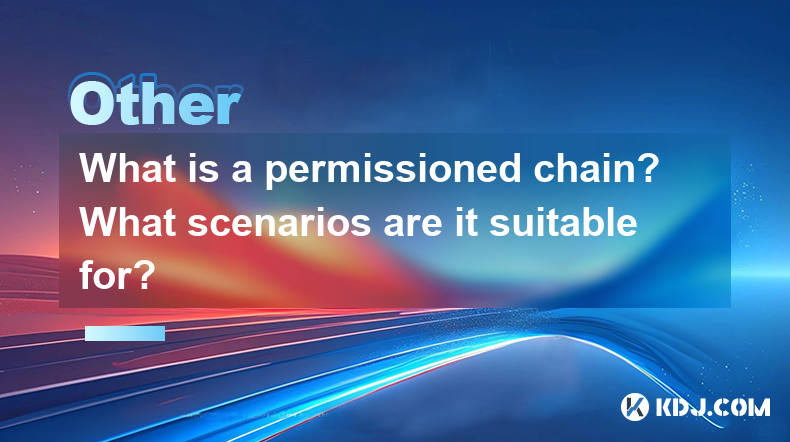
Understanding Permissioned Chains in the Cryptocurrency World
A permissioned blockchain, unlike its public counterpart, restricts access and participation. This means not everyone can join the network or validate transactions. Access is controlled by a governing body or a pre-defined set of participants, who are granted permission to join the network. This control offers significant advantages in specific contexts, but also introduces limitations. Think of it like a private club, with membership carefully vetted and regulated. The level of permission can vary, from a completely closed system to one with varying degrees of access control.
How Does a Permissioned Chain Work?
The core mechanism revolves around controlled access. Instead of a decentralized network of miners validating transactions like in Bitcoin or Ethereum, permissioned blockchains rely on a selected group of nodes. These nodes, often referred to as validators or participants, are pre-approved and authorized to participate in the consensus mechanism. This often results in faster transaction speeds and lower energy consumption compared to public blockchains. The selection process and the consensus mechanism itself are defined by the network's governance structure.
Consensus Mechanisms in Permissioned Blockchains
Different permissioned blockchains utilize various consensus mechanisms. Popular choices include Practical Byzantine Fault Tolerance (PBFT), Raft, and variations of Proof-of-Stake (PoS). These mechanisms ensure agreement on the valid state of the blockchain among the permitted nodes. PBFT, for instance, requires a majority of nodes to agree on a transaction's validity before it's added to the blockchain. The choice of consensus mechanism significantly impacts the network's performance and security.
Key Differences Between Permissioned and Public Blockchains
The most significant difference lies in access and participation. Public blockchains are open to anyone, while permissioned blockchains require permission to join. This impacts transparency, as transactions on a permissioned chain are not necessarily publicly viewable. Public blockchains prioritize decentralization and censorship resistance, while permissioned blockchains prioritize control and potentially faster transaction speeds. Security models also differ; public blockchains rely on cryptographic security and the vast network of participants, while permissioned blockchains rely on the vetting and control of the governing body.
Scenarios Suitable for Permissioned Chains
Permissioned blockchains are best suited for scenarios requiring high levels of control, privacy, and potentially faster transaction speeds. They are not ideal for applications demanding complete decentralization and public transparency.
Supply Chain Management: Tracking goods and materials throughout the supply chain, ensuring authenticity and preventing counterfeiting. The permissioned nature allows only authorized participants (suppliers, manufacturers, distributors) to access and modify the data.
Healthcare: Securely storing and sharing patient medical records, with access controlled by healthcare providers and authorized individuals. Privacy is paramount, and a permissioned chain offers a robust solution.
Financial Services: Streamlining interbank transactions, facilitating faster settlements, and improving security. Controlled access and fast transaction speeds are key advantages.
Digital Identity Management: Creating secure and verifiable digital identities, where only authorized entities can access and update personal information. This enhances privacy and reduces the risk of identity theft.
Voting Systems: Implementing secure and transparent voting systems, with access controlled to prevent fraud and ensure the integrity of the election process. The permissioned nature ensures only eligible voters can participate.
Intellectual Property Management: Protecting intellectual property rights by recording ownership and usage rights on a permissioned blockchain, accessible only to authorized parties. This provides a tamper-proof record of ownership.
Advantages of Permissioned Blockchains
- Enhanced Security: Controlled access limits the potential attack surface, making the network more secure.
- Improved Performance: Fewer participants often lead to faster transaction speeds and lower latency.
- Greater Privacy: Transactions may not be publicly viewable, protecting sensitive information.
- Easier Governance: A governing body can manage and control the network more effectively.
Disadvantages of Permissioned Blockchains
- Centralization: The controlled access introduces a degree of centralization, potentially compromising decentralization ideals.
- Lack of Transparency: The limited access restricts public viewability of transactions, potentially reducing trust.
- Single Point of Failure: The governing body or a significant portion of authorized nodes could represent a single point of failure.
- Permissioning Challenges: Managing permissions and access control can be complex and require careful consideration.
Frequently Asked Questions
Q: What is the difference between a permissioned and a permissionless blockchain?
A: A permissioned blockchain requires authorization to participate, while a permissionless blockchain (like Bitcoin) is open to anyone.
Q: Are permissioned blockchains truly secure?
A: While permissioned blockchains offer enhanced security due to controlled access, they are not immune to attacks. The security relies heavily on the strength of the governing body and the chosen consensus mechanism.
Q: Can a permissioned blockchain be used for public applications?
A: No, permissioned blockchains are not suitable for applications requiring public access and transparency. Their inherent nature restricts participation and visibility.
Q: What are some examples of permissioned blockchain platforms?
A: Hyperledger Fabric, R3 Corda, and Multichain are examples of popular permissioned blockchain platforms. Each offers different features and functionalities.
Q: What are the implications of centralization in permissioned blockchains?
A: Centralization can compromise the ideals of decentralization and censorship resistance. It also introduces the risk of a single point of failure and potential for manipulation by the governing body.
Disclaimer:info@kdj.com
The information provided is not trading advice. kdj.com does not assume any responsibility for any investments made based on the information provided in this article. Cryptocurrencies are highly volatile and it is highly recommended that you invest with caution after thorough research!
If you believe that the content used on this website infringes your copyright, please contact us immediately (info@kdj.com) and we will delete it promptly.
- Gold Exempt From New "Reciprocal" Tariffs
- 2025-04-04 06:35:12
- Time to Buy Aptos (APT) Cheap? This Chart Pattern Signals a 10% Move for the Price!
- 2025-04-04 06:35:12
- An Analyst Has Explained How Dogecoin Could Be at a Make-or-Break Level Right Now Based on a TA Chart Pattern
- 2025-04-04 06:30:12
- Micro Intelligence Company Strategy Has Purchased 22,048 Bitcoins Worth $1.92 Billion in a New Deal
- 2025-04-04 06:30:12
- BlockDAG's Beta Testnet Is Live— Aims to Achieve 15K TPS! Ethereum Price Falls 0.5% & ETC Dips 6.7%
- 2025-04-04 06:25:12
- title: New decentralized finance (DeFi) trading altcoin is surging after gaining support from the top US-based crypto exchange platform by volume
- 2025-04-04 06:25:12
Related knowledge
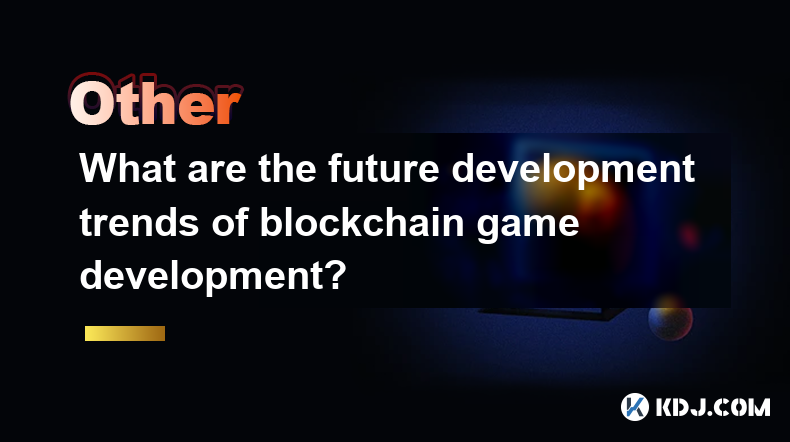
What are the future development trends of blockchain game development?
Apr 03,2025 at 05:00am
Blockchain technology has revolutionized various industries, and gaming is no exception. As we look to the future, several trends are set to shape the development of blockchain games. These trends not only promise to enhance the gaming experience but also to integrate blockchain technology more seamlessly into the gaming ecosystem. Let's explore these t...
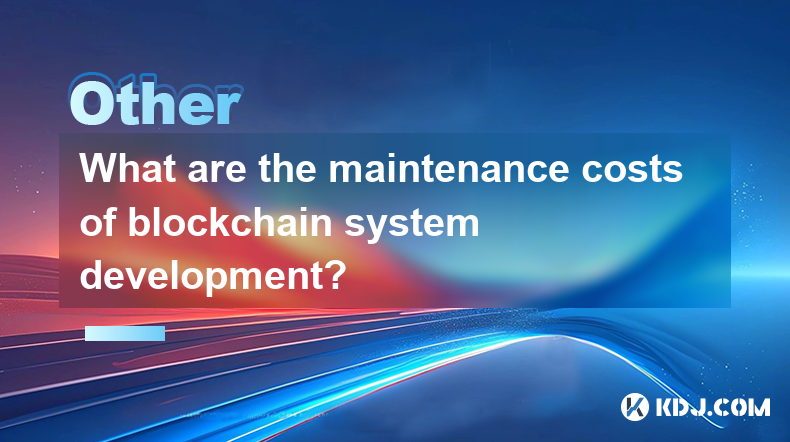
What are the maintenance costs of blockchain system development?
Apr 03,2025 at 06:07pm
The maintenance costs of blockchain system development are multifaceted and depend on various factors. These costs can include technical maintenance, security updates, infrastructure expenses, and personnel costs. Understanding these elements is crucial for anyone planning to develop or maintain a blockchain system. Technical MaintenanceTechnical mainte...
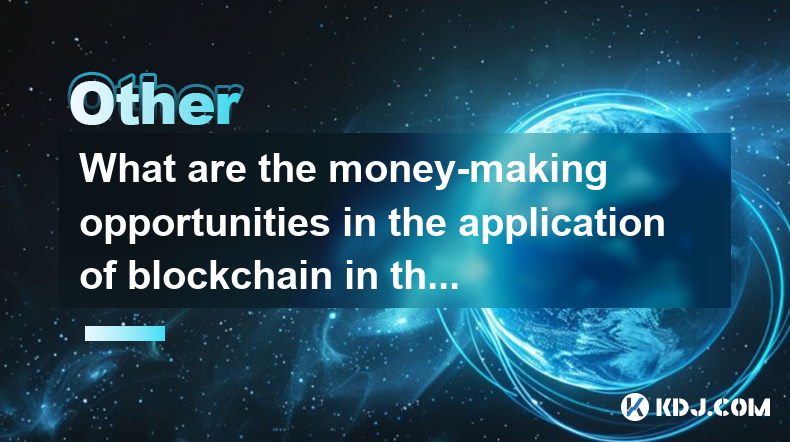
What are the money-making opportunities in the application of blockchain in the medical industry?
Apr 03,2025 at 03:35am
The integration of blockchain technology into the medical industry presents a myriad of money-making opportunities that can revolutionize healthcare systems. Blockchain's inherent characteristics, such as transparency, security, and immutability, make it an ideal solution for various medical applications. By leveraging blockchain, companies can develop ...
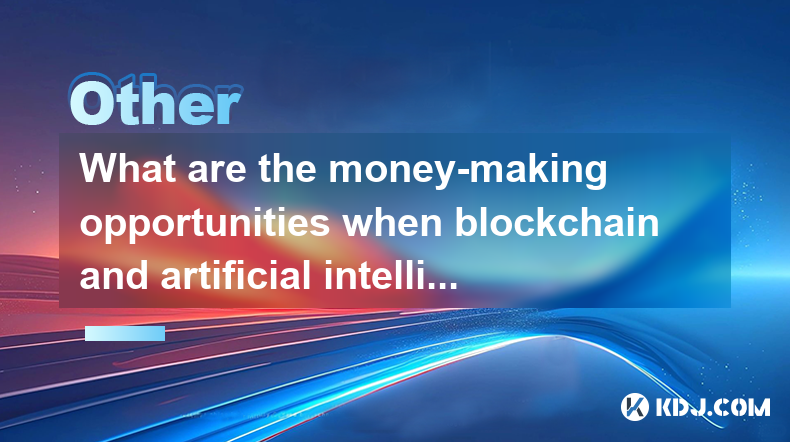
What are the money-making opportunities when blockchain and artificial intelligence are combined?
Apr 04,2025 at 01:28am
The convergence of blockchain and artificial intelligence (AI) presents a myriad of money-making opportunities within the cryptocurrency circle. This fusion leverages the decentralized and secure nature of blockchain with the analytical prowess of AI, creating innovative solutions and platforms that can generate significant revenue. From enhancing tradi...
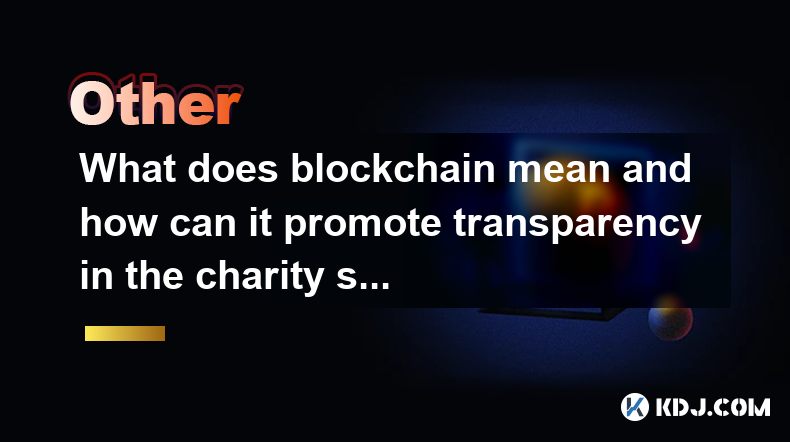
What does blockchain mean and how can it promote transparency in the charity sector?
Apr 03,2025 at 08:29pm
Blockchain technology is a decentralized, distributed ledger that records transactions across numerous computers. This ensures that the data is transparent and nearly impossible to alter retroactively. Essentially, blockchain serves as a digital ledger of all cryptocurrency transactions, enabling secure and direct exchanges without the need for intermed...
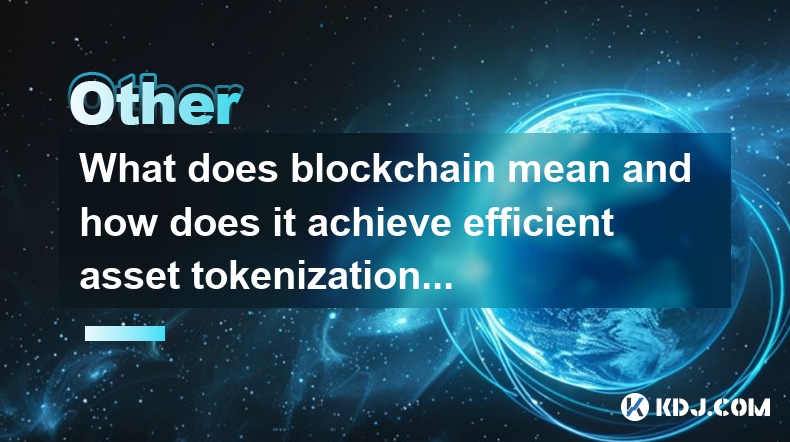
What does blockchain mean and how does it achieve efficient asset tokenization?
Apr 03,2025 at 07:57pm
Blockchain technology is a decentralized, distributed ledger that records transactions across numerous computers. It ensures that each transaction is secure, transparent, and immutable. The concept of blockchain was introduced with the launch of Bitcoin in 2009, but its applications have since expanded far beyond cryptocurrencies. At its core, blockchai...

What are the future development trends of blockchain game development?
Apr 03,2025 at 05:00am
Blockchain technology has revolutionized various industries, and gaming is no exception. As we look to the future, several trends are set to shape the development of blockchain games. These trends not only promise to enhance the gaming experience but also to integrate blockchain technology more seamlessly into the gaming ecosystem. Let's explore these t...

What are the maintenance costs of blockchain system development?
Apr 03,2025 at 06:07pm
The maintenance costs of blockchain system development are multifaceted and depend on various factors. These costs can include technical maintenance, security updates, infrastructure expenses, and personnel costs. Understanding these elements is crucial for anyone planning to develop or maintain a blockchain system. Technical MaintenanceTechnical mainte...

What are the money-making opportunities in the application of blockchain in the medical industry?
Apr 03,2025 at 03:35am
The integration of blockchain technology into the medical industry presents a myriad of money-making opportunities that can revolutionize healthcare systems. Blockchain's inherent characteristics, such as transparency, security, and immutability, make it an ideal solution for various medical applications. By leveraging blockchain, companies can develop ...

What are the money-making opportunities when blockchain and artificial intelligence are combined?
Apr 04,2025 at 01:28am
The convergence of blockchain and artificial intelligence (AI) presents a myriad of money-making opportunities within the cryptocurrency circle. This fusion leverages the decentralized and secure nature of blockchain with the analytical prowess of AI, creating innovative solutions and platforms that can generate significant revenue. From enhancing tradi...

What does blockchain mean and how can it promote transparency in the charity sector?
Apr 03,2025 at 08:29pm
Blockchain technology is a decentralized, distributed ledger that records transactions across numerous computers. This ensures that the data is transparent and nearly impossible to alter retroactively. Essentially, blockchain serves as a digital ledger of all cryptocurrency transactions, enabling secure and direct exchanges without the need for intermed...

What does blockchain mean and how does it achieve efficient asset tokenization?
Apr 03,2025 at 07:57pm
Blockchain technology is a decentralized, distributed ledger that records transactions across numerous computers. It ensures that each transaction is secure, transparent, and immutable. The concept of blockchain was introduced with the launch of Bitcoin in 2009, but its applications have since expanded far beyond cryptocurrencies. At its core, blockchai...
See all articles






















































































